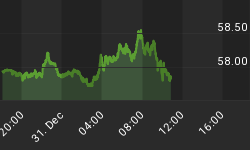It is safe to say that Elliott Wave is a method of market analysis that often provokes controversy. Part of that controversy stems from the potential of EW analysis to lead to specific conclusions about the market's future path. There are some EW analysts that like to make grand predictions about the stock market on the scale of decades or longer, and make shorter term market calls based on what those long-term predictions say must happen. This top-down approach carries with it enormous room for error in terms of market action and time, and can leave the individual investor - who usually just wants to know what to do with their portfolios one year to the next - lost is a sea of long-term predictions that have no practical application to the here and now.
EW is a set of methods to describe the fractal nature of market movement, which means that the same rules apply to interpreting the long-term trend and the short-term trend. Having a long-term picture in mind can help the interpretation of more short-term market action, but it should not be so influential that is trumps what you are seeing right in front of you. EW can be enormously helpful in the short run if it's taken in the right context and used inclusively with other methods. EW does not and cannot predict the future, but it does allow you to refine the probability that the market will head in a certain direction. The fact of the matter is that there an infinite number of ways EW patterns can be put together, and while in hindsight it is perfectly clear what patterns traced out it remains impossible to say with certainty what will trace out in the future, and when. Guessing the exact pattern is like pulling a needle from a haystack, and this is where most EW analysts get in trouble - trying to be too precise with a tool that at best only gives you strong hints about the direction of the current trend.
Fortunately, being on the right side of the trend does not require you to know the exact path the market will take, only whether it is more likely that the market is heading up or heading down. The stock market so far in 2004 has been going down, but does that mean we are going to go down more from here or is the market going to turn up from here? Let's look at what EW is saying, and more importantly what it is not saying. The chart below shows the Dow Industrials from 1990 through Friday's close.

What we do know is that the Dow traced out a corrective decline from its high in 2000 to its low in 2002 (labeled A-B-C in Red), and that this decline could now be complete or it could have been only the first leg in a larger decline. The rally off the 2002 low has traced out 3 waves so far, and at this point it can be counted as waves 1-2-3 of a new bull market or waves a-b-c of a bear market correction (shown in Blue). The two statements above are all we know for sure at this scale, and anything beyond those statements that goes into what count is more likely is solely the analyst's opinion of what might happen next, not objective EW analysis. And the fact is, there is nothing yet in the above chart that suggests Dow 4000 is more or less probable than Dow 20,000.
However, it is likely that 2004 will give us some strong hints in that regard. If the current decline continues and the Dow moves below 9043, the advance from the October 2002 low will be confirmed as an A-B-C corrective rally and it will be clear that the Bear market did not end in 2002. This would not suggest what a continued Bear market would look like, but it would strongly suggest that the 2000 highs would not be broken anytime soon. If the Dow remains above 9043 this year and rallies to a new post-2002 high it would be clear that the Dow (as well as other major indexes) had traced out a 5 wave advance from the 2002 low, and that would have more bullish long-term implications.
At Sitkapacific.com, we have been short the majority of the year because the pattern of the decline from the March high in the Dow (and in the other major indexes) suggested that there would be more downside after the March-April rally - which took the form of the decline to the May low. And now the market has given us clear lines in the sand that will let us know if the highs in early 2004 were the end of a wave 3 rally from the March 2003 low (which would give us another tradable advance in 2004 once this decline completes), or if the highs in early 2004 were the end of a bear market A-B-C correction from the October 2002 low (which would leave the door open for a much more significant decline from here).
There are bearish hints that Fibonacci and EW are dropping in the short term charts, especially in the SOX and the Dow, and there are clear levels on the Dow and other indexes that if broken will leave a more bullish short-term picture. We will trade whatever the market decides to give us in 2004-2005, and you should be prepared to do so as well - regardless of how sure some are of their long-term EW predictions.
















